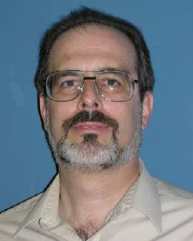
George Ginther
Senior Scientist
PhD, Carnegie-Mellon University, 1985
- Office Location
- 357 Fermilab MS
- Telephone
- (630) 840-6337
- Fax
- (630) 840-8481
- ginther@fnal.gov
- Web Address
- Website
Biography
Dr. Ginther received his BS in physics from Carnegie-Mellon University in 1977 and his MS in physics from CMU in 1979. Moving to Fermilab, he worked under the direction of Professor Richard M. Edelstein on Fermilab fixed-target experiment E515, and received his PhD from CMU in 1985. In the fall of 1985 he joined the University of Rochester as a Research Associate, working in the high energy physics group with professors Ferbel, Lobkowicz, and Slattery. In 1988, Dr. Ginther was promoted to Senior Research Associate, and in 2003 he was appointed Senior Laboratory Engineer and to Senior Scientist.
Research Overview
Dr. Ginther's research interests are in the area of experimental high-energy physics. Along with professors Demina, Ferbel, and Slattery, and Senior Scientist Zielinski, Dr. Ginther is currently collaborating on the DZero experiment at the Fermilab Tevatron. This experiment triggers on selected collisions of protons and anti-protons at the highest energies currently generated by a man-made source. Studies of these hard collisions at the energy frontier yield insights into the fundamental forces and underlying symmetries of nature.
Dr. Ginther is also involved in Fermilab fixed-target experiment E706, which is a comprehensive study of hard scattering events yielding large transverse momentum direct photons and neutral mesons. The measured yields of high transverse momentum photons are substantially larger than anticipated from calculations based upon perturbative Quantum ChromoDynamics, highlighting the need for refinements in these QCD calculations. The spectrometer used to acquire the E706 data samples simultaneously recorded data selected via a high mass dimuon trigger for Fermilab experiment E672. Studies of this dimuon triggered data provided insights into the production of several hidden charm states as well as bottom particles.
For further details, go to Dr. Ginther's home page at: http://www-d0.fnal.gov/~ginther/GG.htm.
